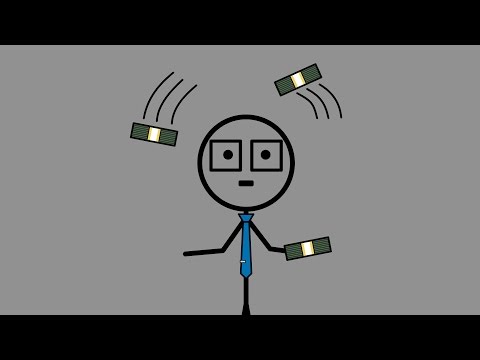Contents
The business can then optimise margin contribution by maintaining the lowest possible supply chain cost. This implies that consumption is solely dependent on the supply and will remain the same irrespective of the shift in the demand curve. Thus, the price is the variable that brings the equilibrium. In Fig 1 above, we see an increase in quantity demanded which means that more will be consumed at any given price level. Distinguish between a change in quantity supplied and a change in supply.
An enhance in manufacturing prices and excessive rain that reduces the yields from espresso crops are examples of events that may scale back provide. Figure 3.6 “A Reduction in Supply” reveals a discount within the provide of espresso. We see in the provide schedule that the amount of espresso equipped falls by 10 million kilos of espresso per month at every value. A change that increases the amount of an excellent or service supplied at every worth shifts the supply curve to the right. For example, when the introduction of a new technology reduces the cost of production of a commodity as per the law of supply, the output of the commodity would increase.
India Dictionary
Proactively revise plans to address shortages and overloads based on the latest data from across the supply chain. Identify demand risk and evaluate the impact of demand changes on supply. Thus, the price mechanism decides the quantity of commodities to be produced. The pricing system also decides which things will be created, how they will be produced, and who will get them—that is, how the goods will be dispersed. Production subsidies, on the other hand, will lower marginal costs. As a result, the minimum price at which the items must be delivered is increased or lowered.

Price Elasticity of demand is defined as the percentage of change in quantity demanded divided by percentage change in price. Keeping the price high, on the other hand, might have a negative impact on how purchasers perceive the product. If clients do not believe the product is worth the high price, they may choose for a less expensive alternative. A higher price may result in decreased demand, which may result in a decrease in supply.
Water Treatment Plants
If the quantity supplied is exactly equal to the relative change in price then the elasticity of supply is . An enhance within the change in provide shifts the supply curve to the proper, while a decrease in the change in provide shifts the provision curve left. Consumer goods, services, labor, and other salable commodities may be created and dispersed in this manner. In either situation, an increase in demand will cause the price to rise, causing producers to provide more; a reduction in demand will cause the price to fall, causing producers to supply less. As a result, supply rises and the supply curve changes to the right.
- That’s a motion from point A to level B along the supply curve in Figure 3.four “A Supply Schedule and a Supply Curve”.
- At a given point / period of a time, a family buys 3 kgs of Tea and 3 kgs of coffee at given prices.
- This reflects the drive to increase working capital efficiency, whilst at the same time maintaining high levels of customer service.
- Thus, movement along the supply curve means expansion and contraction of supply whereas shifts in supply curve means increase and decrease in supply.
- A change in supply that reduces the amount supplied at every price shifts the supply curve to the left.
- Let us now understand what we mean by demand and supply and what are their determinants.
If the percentage change in the quantity demanded is greater than the percentage change in price , then a decrease in price will result in increase in revenues. In other case, if the percentage change in the quantity demanded is less than the percentage change in price, the increase in prices will result in increase of total revenue. So, due to increase in market supply, the supply curve shifts rightward as shown.
What factors affect change in supply?
In the figure above, consumption reflects supply and not by the quantity demanded. For example, consumption of ripe mangoes during peak harvest season. Hence, the use of consumption as a proxy for demand is ERRONEOUS as it is determined by the relationship is the scope of financial accounting between demand and supply. Elasticity of supply refers to the responsiveness of the quantity supplied of a good to change in its price. When there is a rise in the supply because of rise in the prices, it is called “Expansion in Supply”.
- Cloud Customer Connect is Oracle’s premier online cloud community.
- Align your plan with external suppliers and contract manufactures to execute your operations strategy.
- If it is expected that prices of a commodity will fall in the future, the demand for the commodity will fall which will result in falling production and Supply of the commodity.
- Proactively revise plans to address shortages and overloads based on the latest data from across the supply chain.
- However, this rule is not valid for high value goods, whose demand increases when price rises.
Any change in non-price elements would cause the supply curve to vary, but changes in commodity price may be followed along a constant supply curve. This approach characterises the most advanced manufacturing companies. They have segmented the supply chain from end-to-end and can use it to address both the demand forecasting and inventory management levers. When the supply of a commodity decrease but its price remains the same, there is a downward shift in the supply curve.
For example, other things being equal, fall in prices of sugar would increase demand for tea and vice versa. If the price of a commodity increases, the demand falls and vice versa. However, this rule is not valid for high value goods, whose demand increases when price rises.
What is ‘Change in Supply’? Explain the Effect of Tax Imposed on a Good on the Supply Of The Good. – Economics
Producers, for example, are increasing their supply in anticipation of higher industrial product prices in the future. Current supply is affected by expectations of a change in any factor impacting future profitability. Import restrictions and company taxation are two examples. The contemporary economy is built on supply and demand dynamics. Each product or service has its own supply and demand patterns depending on price, usefulness, and personal taste.
Changes in supply cause a rightward or leftward shift in the supply curve due to an increase or decrease in the supply of a commodity, respectively. If the income of households increases, the demand for inferior goods would fall and luxury/ normal goods would rise. This is also known as law of demand which says that cateris paribus there is an inverse relation between the price and demanded quantity of a commodity. For example a person, when earns more can afford to eat in a restaurant if his income increases.

Review and collaborate on plan changes with internal and external stakeholders. Simulate the impact of demand, supply, capacity, and item structure changes to prevent disruptions. Get at-a-glance aggregate and detailed summaries of revenue, margin, demand, supply, resource utilization, changeover time, and other metrics. Prioritize, simulate, and reschedule open orders based on the latest supply availability. Reduce cost to serve, buffer variability, and stockouts by aligning business segment plans using a common supply network.
Changes in Supply
At a price of $6 per pound, for example, the original amount provided was 25 million pounds of espresso per month . With a brand new provide curve S3, the quantity supplied at that value falls to 15 million kilos of coffee per thirty days (level A″). If there’s a change in provide https://1investing.in/ that increases the quantity equipped at each value, as is the case in the provide schedule right here, the availability curve shifts to the best. An increase in supply refers to the increase in supply at the same price or in other words, a rightward shift of the supply curve.
What is the relationship between profit and supply?
Profit is given by the difference of the price and marginal cost. Supply is negative demand. An increase in supply refers to either more units available at a given price or a lower price for the supply of the same number of units.
Suppose, the price of ice cream is Rs.20 and the quantity supplied is 10 units. When the price increases to Rs. 10, the supply extends to 5 units. When the quantity supplied of a commodity decrease with a fall in its price, it is known as an extension of supply, other things being equal. Suppose, the price of ice cream is Rs.10 and the quantity supplied is 5 units. When the price increases to Rs. 20, the supply extends to 10 units. When the quantity supplied of a commodity increase with a rise in its price, it is known as an extension of supply, other things being equal.
E) When the firms expect a rise in the price of commodity near future. E) When the firms expect a fall in the price of commodity near future. This shift of the supply curve is known as an upward shift. Whereas you will see that on the same curve, with the decline in prices, an increase in the consumption level with the increased prices.
What is quantity supply?
The quantity supplied is the amount of a good or service that is made available for sale at a given price point. In a free market, higher prices tend to lead to a higher quantity supplied and vice versa.
When everyone seems to be happy again, we will examine the new value and amount to the old and see what happened. It is shifted to the right, as a result of for a given quantity, a higher price may be obtained. Conversely, if the price of metal decreases, producing a car becomes inexpensive.
- In either situation, an increase in demand will cause the price to rise, causing producers to provide more; a reduction in demand will cause the price to fall, causing producers to supply less.
- It indicates the direction of change in the amount supplied and it does not indicate the magnitude of change.
- Producers, for example, are increasing their supply in anticipation of higher industrial product prices in the future.
Let us now understand what we mean by demand and supply and what are their determinants. There are certain exceptions to the theory law of supply. The law will not apply if there are future expectations for further change in prices. If sellers expect further fall in prices in future, they would be ready to sell more even at low prices.

